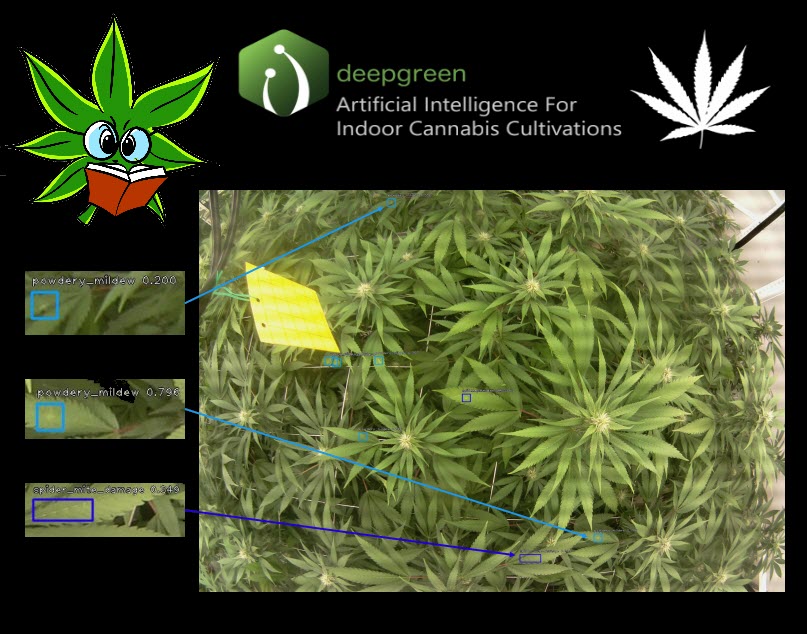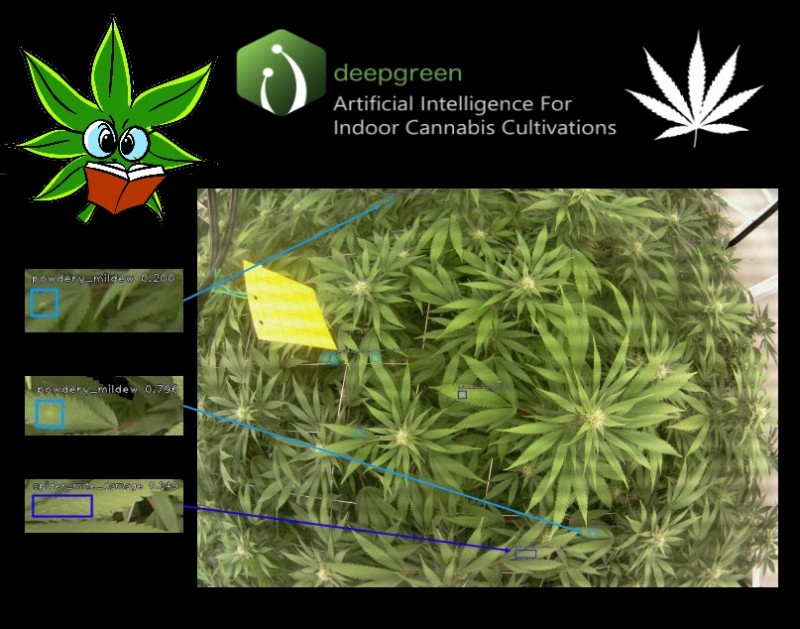Artificial Intelligence for Cannabis Growers With Deepgreen

Cannabis.net was happy to sit down with Colin Ferrian of deepgreen, an artificial intelligence program that helps cannabis growers identify problems with their grow before the human eye can pick them up. How did Colin get into AI and what uses does he see for AI in the cannabis space? Check out this interview!
- How do you come up with the idea for deepgreen?
- deepgreen was the brainchild of my two co-founders, Max and Maxime. They met while working for an artificial intelligence company in Vietnam that was analyzing content on the internet to give recommendations to investment fund managers. Both had family backgrounds in agriculture, and they knew this technology (AI) could make a major impact on the industry; So they began to develop an algorithm that could identify powdery mildew on pictures of plants. As they started exploring fundraising, they stumbled upon CanopyBoulder, who accepted them into the accelerator program. It was an incredible stroke of luck because they found themselves in a relatively nascent industry where the plant is valued at 32 times the next most valuable crop, so growers were much more inclined to adopt new technology that could improve their yields. I was introduced to the team through one of the Canopy Managing Directors, Micah Tapman, and joined as the business and finance role.
- What was you background in before you started looking into an AI camera weed project?
- Before joining deepgreen, I had a corporate finance background. I started my career on a sales desk in investment banking before moving into an investment analyst position at a hedge fund. Both roles came with incredible mentors and provided a strong foundation for building a startup, from cold calling and explaining complex topics in concise and simple form, to a thorough understanding of valuations and developing strategic plans.
- What kind of value can a grower who uses your product expect as far as croup savings and in harvest?
- We’re saving growers an average of $3,500 per 1,000 square feet of canopy in labor for scouting and improving yields over 7%. This comes down to roughly a 6-month return-on-investment, and more importantly, happy customers. We also give our growers a report on the performance of their strains, helping them understand which genetics are most susceptible to certain issues, like specific nutrient deficiencies or diseases, and we become a partner in guiding their cultivation planning.
- As a first mover with this technology and cannabis, how do you plan to differentiate deepgreen when competitors emerge?
- We’re heavily focused on using software to keep hardware costs low, because we want customers to recognize we’re a fraction of the cost of their current practices while being significantly more efficient. By leveraging artificial intelligence frameworks and processes that are less than 12 months old, we’ve been able to leverage all sorts of affordable hardware solutions. We have maybe two crop imaging peers in indoor farming, and they rely heavily on proprietary hardware, from putting cameras on conveyor belts to using high-end vision sensing. We’re 3% the cost of the next most affordable solution and the only company offering specific diagnosis of crops, so we expect this will help us maintain a strong barrier in the near term.
- How did you develop your AI team or did you outsource it? What did they say when you said it would be a weed project, not just and AI coding project?
- Our artificial intelligence is developed entirely in-house, so we’ve been lucky enough not to have conversations around monitoring cannabis. It sets us apart because we have yet to run into other artificial intelligence teams in the industry – although that’s just a matter of time. That said, it often has entertaining reactions when we explain to our general agriculture customers that we got our start with cannabis.
- What is the biggest mistake you see growers, big or small, make when first starting out?
- We consistently see growers take shortcuts when starting out. Doing things like skimping on facility sanitation, understaffing, or simply expecting to develop processes along the way are surprisingly common, and it always turns into huge costs and headaches. It’s difficult because these cultivation managers are under pressure from investors or management to turn plants into money, but there are countless stories of growers moving into a retrofitted industrial building and moving as quickly as possible to get the plants in, only to have the harvest decimated by powdery mildew and pests.
- Any advice you would give a small home grower, just getting started with a few plants?
- Research the most common issues you can expect to encounter and have a plan. It’s relatively obvious to have plans for best practices when growing, but unless you’re an agronomist, you’ll end up spending lots of time trying to retroactively diagnose issues like a root aphid infestation, where you could have instead proactively applied neem oil to prevent the pest invasion in the first place.
- How big can your system grow into as far as plant number? Can it expand to massive grows by adding more camera?
- Yes, it can cover the largest grows in North America, and these are the best customers for our technology because the large cultivations often have dedicated teams that inspect the plants every day. Our technology automates most of this process, so instead of looking for problems, these teams can spend time identifying solutions for the issues we’re autonomously detecting.
- What are your expansion plans and funding goals?
- We’re working on closing a few valuable partnerships with market leading product companies in the coming months, and this past week, we released an API for mobile phone applications to be able to integrate plant health diagnosis with computer vision. Basically, allowing growers to take a picture of a plant with their phone, and we’ll tell them exactly what’s wrong. And we’ll be back on the fundraising road in 2019, but we haven’t decided on goals or a timeframe at this point.
- How can people contact you and what are your site URLs and social media channels?
- You can find us at deepgreen.ai, and we can be reached at contact@deepgreen.ai. We’re also on Twitter at @deepgreenai and Facebook at our company page, deepgreen.
OTHER STORIES YOU MAY ENJOY...
ISRAELI CANNABIS AI AND HOW IT WORKS, CLICK HERE.
OR..
HOW AI IS REVOLUTIONIZING THE CANNABIS SPACE, CLICK HERE.









